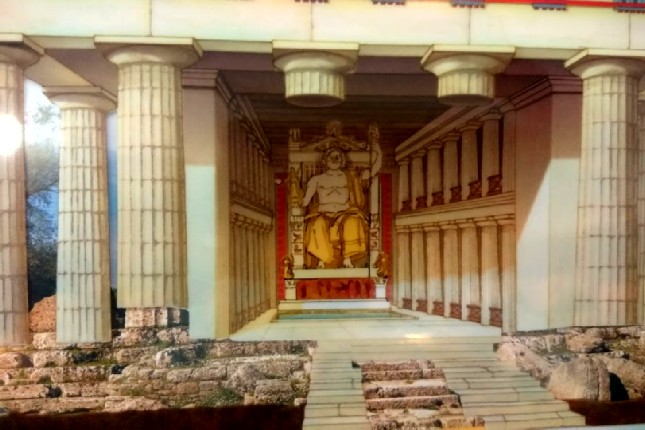The golden ivory statue of Zeus in Olympia was the first, in chronological order, of the Seven Wonders of the Ancient World, rising to its pedestal in the temple of Zeus in 430 BC. It was fantastic and inspired awe and admiration for every visitor, an indication of the magnificent artwork of Phidias.
The Seven Wonders of the Ancient World
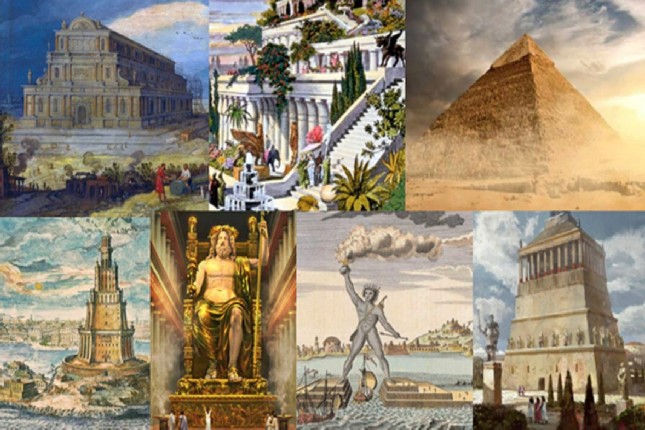
The ancient world certainly had many accomplishments. There are some amazingly great creations that, although they do not exist today, have been left in the memory of civilization. Of the many creations, some are considered miracles. Seven of these created several centuries before Christ around the Mediterranean basin are known as the wonders of the ancient world.
Zeus, the King of the Gods
The ancient Greeks worshiped Zeus, the king of the gods. They honored him at the Altis, as the sanctuary was originally known, in Olympia, at regular intervals with many worship events. The latter included sports competitions. The first Olympic Games were organized there in 776 BC. Since then and for 1100 years, the games have been held every 4 years.
The Temple of Zeus
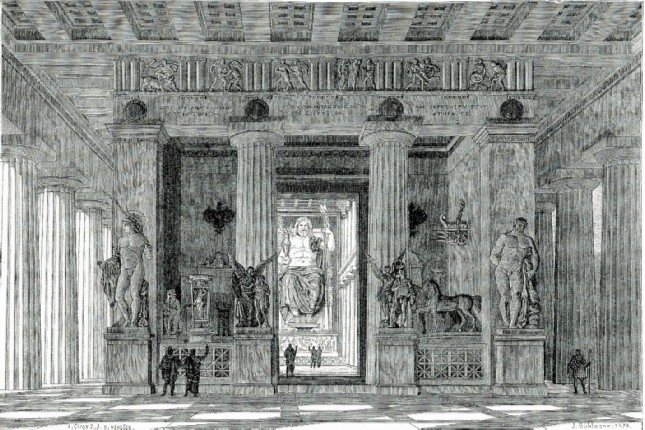
In the 5th century BC, people of Olympia decided to build a temple to honor Zeus. The magnificent edifice was built between 466 and 456 BC. It was made of stone blocks and solid columns. For a few years after its completion, there was no statue of Zeus until 430 BC when it was commissioned by the famous Athenian sculptor Phidias.
In the 6th century AD, the region of Olympia was shaken by earthquakes. The temple was destroyed by landslides and floods, and the mud covered everything. Beneath the mud were the remains which archaeologists eventually discovered.
The Statue of Zeus
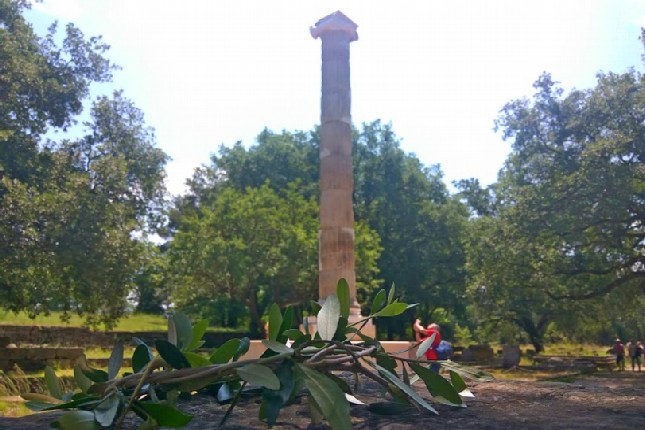
The sculptor Phidias, or Pheidias, had already made two beautiful statues in Athens, of the goddess Athena. At Olympia, Phidias and his associates first made a wooden structure to serve as the skeleton of the statue. Then they covered it with ivory slabs to depict the naked skin of the god and gold leaves on his clothes. The statue was placed on a throne with ebony inscriptions and gemstones. When completed, it was 13 meters high and its head almost reached the roof of the temple. It gave the impression that if Zeus had stood up from his throne, he would have left the temple without a roof! On the walls of the temple, podiums were built in order for visitors to admire the face of the god. After its completion in 435 BC, the statue was one of the greatest wonders of the world for the next 800 years.
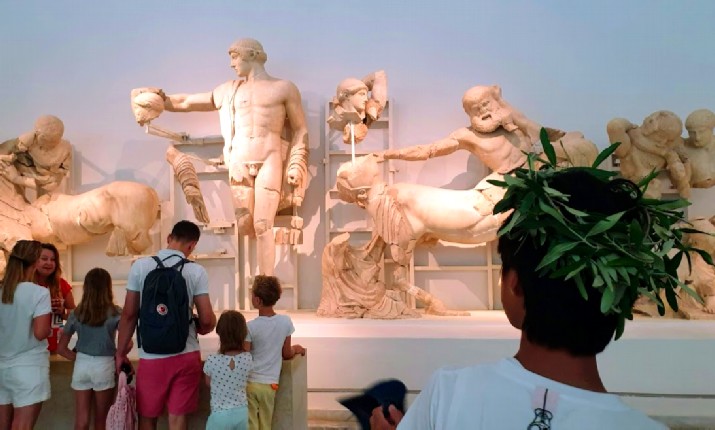
In 391 AD, with the rise of Christianity, the Romans banned the Olympic Games and closed down the Greek temples. The statue of Zeus was subsequently transferred to Constantinople. In 462 AD, a fire destroyed the palace where the statue was located, causing it to be permanently lost.
The Workshop of Phidias
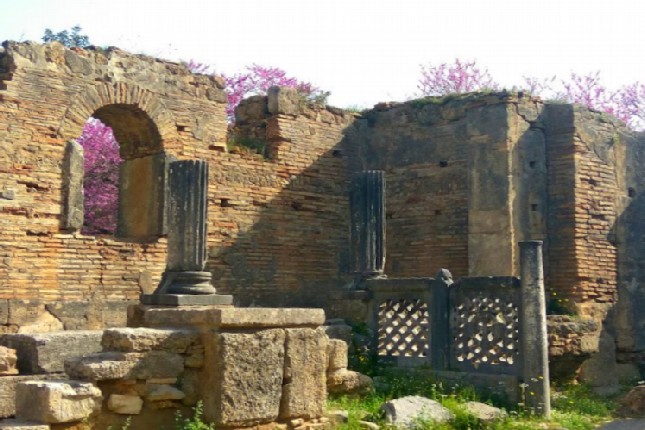
West of the Temple of Zeus is the workshop of Phidias. The workshop of Phidias is where the colossal ivory-and-gold Statue of Zeus, one of the Seven Wonders of the Ancient World, was sculpted by the Athenian master. In the 5th century AD, it was converted into an early Christian church. One can still see the low marble chancel screen. The church was destroyed by the earthquake of 551 AD. The workshop was identified by archaeologists after the discovery of tools, molds and a cup inscribed on the bottom "Φειδίου εἰμί" ("I belong to Phidias").
The Sanctuary of Olympia
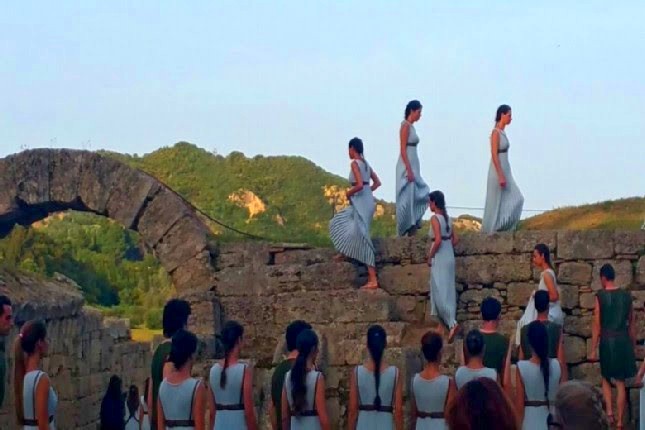
Olympia was the most celebrated sanctuary in ancient Greece. Dedicated to Zeus, it was the venue for the Olympic Games held in the context of the Olympics, the most important celebration of the Greeks during most of antiquity. Olympia was called Altis, that is, the Sacred Grove. It was built on the north bank of the river Alfeios in the western part of the Peloponnese. There are traces of human presence from the Neolithic period. It was originally a rural settlement and gradually developed into the largest religious center of the ancient world. The Altis had one of the highest concentrations of masterpieces from the ancient Greek world including the statue of Zeus, one of the seven wonders of the ancient world.
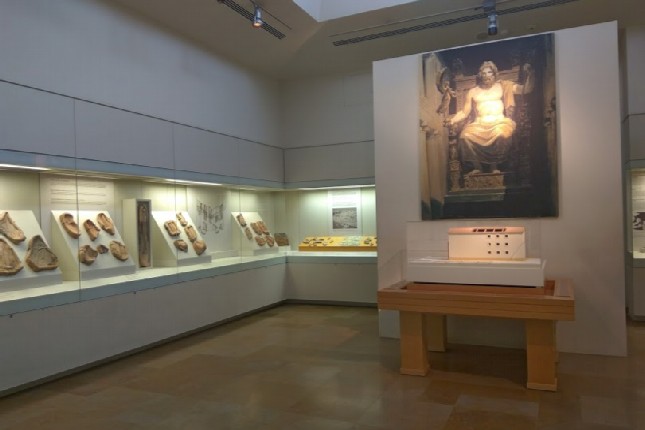
Today, visitors can visit the ruins of the Temple of Zeus at the Archaeological Site of Olympia, a monument of the world heritage of UNESCO, where the Statue of Zeus was located. The Archaeological Museum of Olympia houses the most striking of these finds, some of which are worth traveling around the world to experience in person.
Olympia Joined Tours
- Premium Skip-the-Line Olympia - Katakolon Joined Tour (5h)
- Olympia - Katakolon Joined Tour & Free Olive Oil Tasting (5h)
- Olympia - Katakolon Joined Tour – Pure Olympia (4h)
- Olympia - Katakolon Joined Tour with On-Board Guidance – Budget Tour (5h)
Olympia Private Tours
- Private Olympia Sightseeing #1 rated tour
- Olympia Taxi Tour Experience
- Ancient Olympia & Beach Fun for Kids (half day)
- Ancient Olympia & Beach Getaway (half day)
- Olympia & Wine Flavors - Site and Winery - Half Day Tour
- Olympia & Archimedes’ Ancient Technology Museum – Kid friendly tour (4h)
- Ancient Olympia Private Day Tour from Athens

